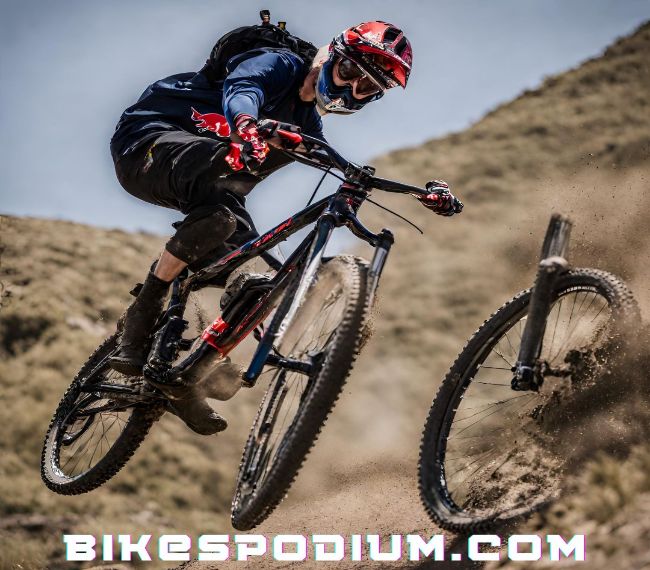A rigid fork is one of the primary components of a mountain bike’s front suspension system. Unlike suspension forks, which offer the ability to absorb impacts and provide a smoother ride, rigid forks do not have any suspension mechanisms. Despite this, there are several advantages to using rigid forks in 29ers, which are mountain bikes equipped with 29-inch wheels. In this article, we will explore the benefits of rigid forks in 29ers, highlighting their impact on performance, weight, simplicity, and cost.
1. Enhanced Efficiency and Improved Handling
One of the key advantages of rigid forks in 29ers is the enhanced efficiency they offer. With no suspension components, rigid forks transfer power more directly from the rider’s pedal strokes to the wheels. This results in better energy transfer, allowing riders to generate more speed and maintain momentum on various terrains.
Moreover, rigid forks provide exceptional handling characteristics. They offer precise control and responsiveness, allowing riders to navigate tight corners and technical sections with ease. The absence of suspension components eliminates any potential loss of energy due to fork compression, ensuring a consistent and predictable riding experience.
- Efficiency: Rigid forks excel in efficiency, as they eliminate energy loss associated with suspension compression. The direct power transfer from pedal strokes to the wheels allows riders to generate more speed and maintain momentum, especially on challenging terrains.
- Improved Handling: Rigid forks provide superior handling capabilities, enabling riders to maneuver with precision and confidence. The precise control and responsiveness of rigid forks allow riders to navigate tight corners and technical sections effortlessly.
2. Reduced Weight for Efficient Climbing
Another notable advantage of rigid forks in 29ers is their significantly reduced weight compared to suspension forks. Suspension forks, with their complex mechanisms and added components, can add a considerable amount of weight to a mountain bike. In contrast, rigid forks are lightweight and contribute to an overall lighter bike setup.
The reduced weight not only enhances the bike’s climbing abilities but also improves its maneuverability. The lighter front end allows riders to more easily lift the front wheel for obstacles and execute precise maneuvers on technical trails. This weight reduction is particularly beneficial for cross-country riders and those who prioritize climbing efficiency and agility.
- Weight Reduction: Rigid forks are considerably lighter than suspension forks due to their simpler design. The reduced weight contributes to better climbing efficiency, allowing riders to conquer steep ascents with less effort.
- Maneuverability: The lighter front end of a bike equipped with a rigid fork enhances maneuverability. It enables riders to lift the front wheel effortlessly over obstacles and execute precise maneuvers on technical trails, providing greater control and confidence.
3. Simplified Design and Lower Maintenance
Rigid forks boast a simplified design compared to their suspension counterparts. Without any moving parts or complex mechanisms, rigid forks are generally easier to maintain and require less frequent servicing. This simplicity translates into reduced maintenance costs, making rigid forks a more budget-friendly option in the long run.
Additionally, the absence of suspension components eliminates the need for occasional maintenance tasks such as air pressure adjustments, seal replacements, and fork maintenance. This simplicity not only saves time but also ensures that riders can focus more on enjoying their rides rather than constantly tending to their suspension system.
- Ease of Maintenance: Rigid forks require minimal maintenance due to their simple design. With no moving parts or complex mechanisms, there are fewer components that can wear out or malfunction. This simplicity reduces the need for frequent servicing and saves riders both time and money.
- Time and Cost Savings: The absence of suspension components means riders can enjoy substantial time and cost savings. Without the need for tasks like air pressure adjustments, seal replacements, or fork maintenance, riders can spend more time on the trails and less time on maintenance.
4. Cost-Effectiveness and Durability
Compared to suspension forks, rigid forks are typically more affordable. The absence of suspension technology and the simpler design result in lower production costs, making rigid forks a cost-effective choice for riders on a budget. Riders who prioritize durability and long-term reliability will find rigid forks to be an excellent option as they are generally less prone to mechanical failures.
Furthermore, rigid forks often offer increased rigidity and stiffness due to their construction. This rigidity helps in maintaining precise steering control, especially when tackling rough terrains and fast descents. The added durability and decreased risk of mechanical issues make rigid forks an attractive choice for riders seeking a reliable and low-maintenance solution.
- Affordability: Rigid forks are more budget-friendly compared to suspension forks, making them a cost-effective option for riders looking to upgrade their 29ers. The absence of suspension technology and simpler design contribute to lower production costs, allowing riders to save money without compromising performance.
- Durability: Rigid forks are known for their durability and long-term reliability. Their construction often offers increased rigidity and stiffness, ensuring precise steering control even in challenging conditions. Riders can have peace of mind knowing that their rigid forks are less prone to mechanical failures.
In conclusion, while rigid forks may lack the ability to absorb impacts like suspension forks, they offer several advantages for riders of 29ers. The enhanced efficiency, improved handling, reduced weight, simplified design, lower maintenance requirements, cost-effectiveness, and durability make rigid forks a compelling choice. Depending on your riding style, preferences, and terrain, opting for a rigid fork in your 29er can provide a responsive, efficient, and enjoyable riding experience.
FAQ
Q: What are the advantages of using rigid forks in 29ers?
A: The advantages of using rigid forks in 29ers include enhanced efficiency, improved handling, reduced weight, simplified design, lower maintenance requirements, cost-effectiveness, and durability.
Q: How do rigid forks enhance efficiency and improve handling?
A: Rigid forks transfer power more directly from the rider’s pedal strokes to the wheels, allowing for better energy transfer and increased speed. They also provide precise control and responsiveness, making it easier to navigate tight corners and technical sections.
Q: What benefits does the reduced weight of rigid forks offer?
A: The reduced weight of rigid forks improves climbing abilities and maneuverability. It allows riders to lift the front wheel more easily over obstacles and execute precise maneuvers on technical trails.
Q: What are the maintenance advantages of using rigid forks?
A: Rigid forks have a simplified design and fewer moving parts, resulting in easier maintenance and less frequent servicing. This simplicity saves time and reduces maintenance costs. Additionally, the absence of suspension components eliminates the need for tasks such as air pressure adjustments and seal replacements.



